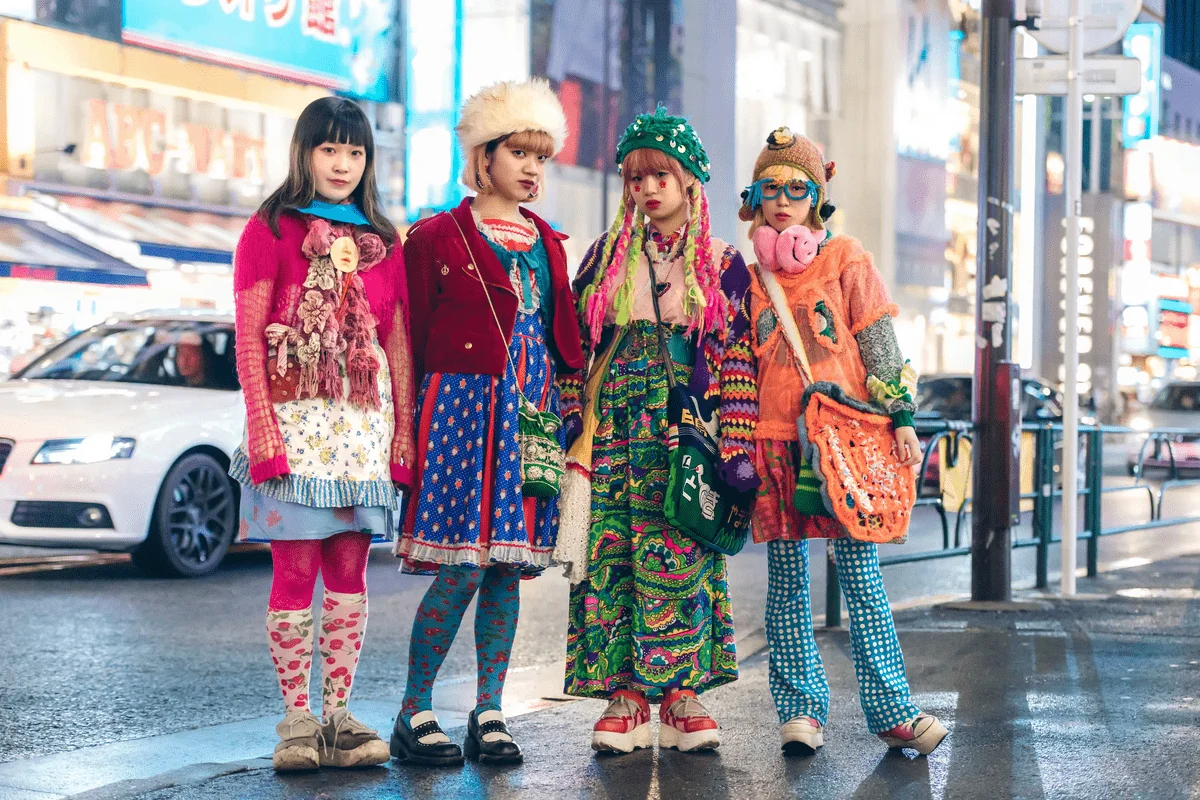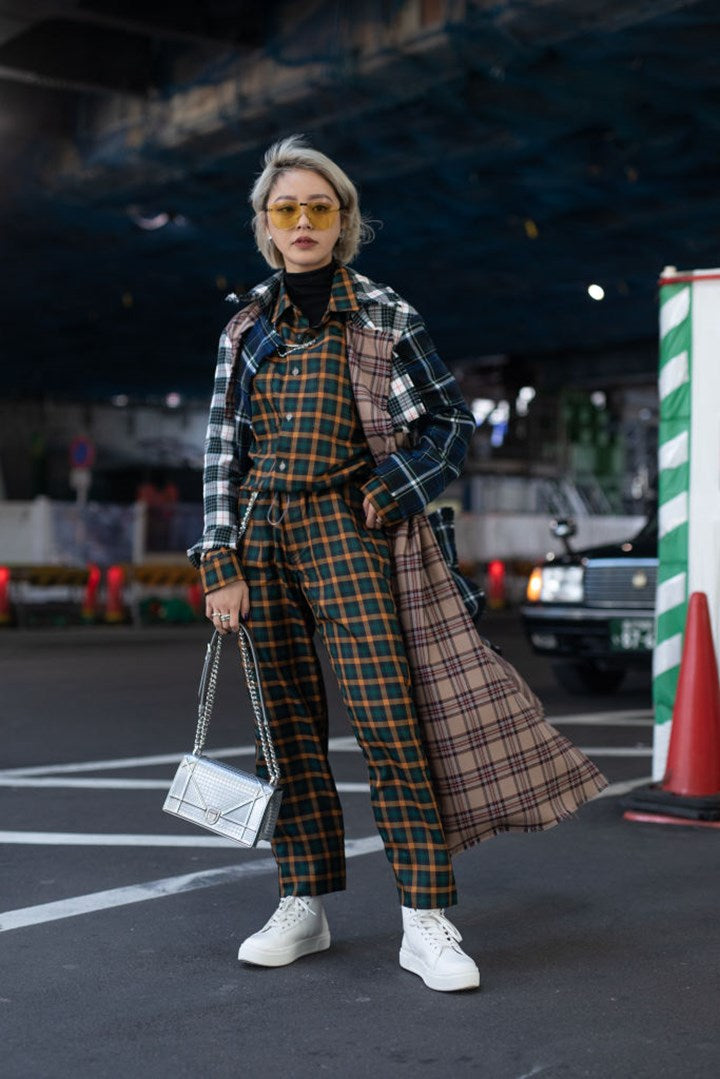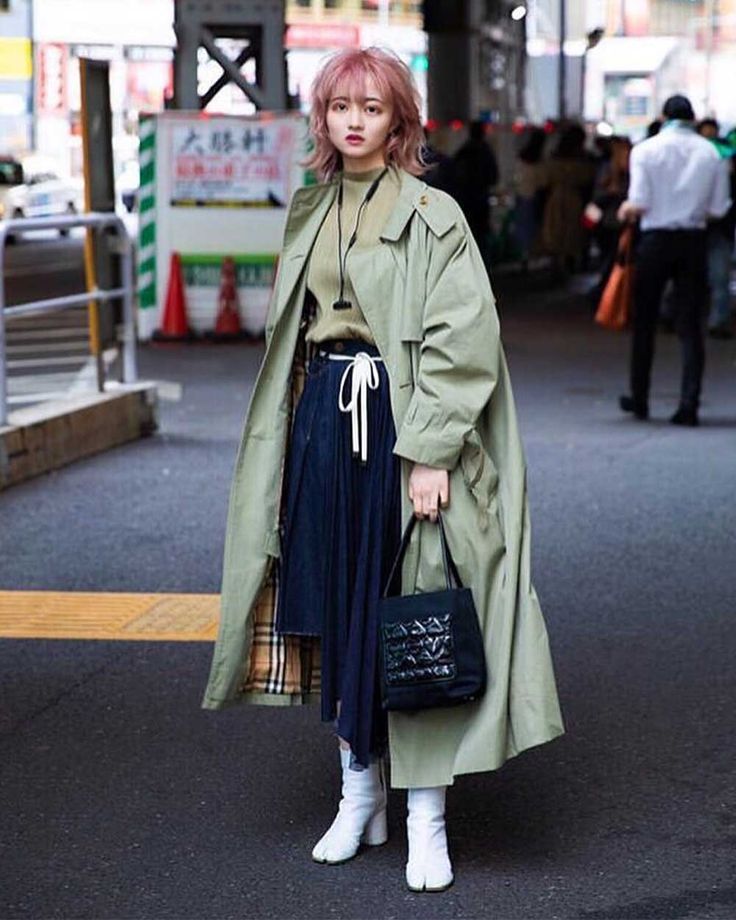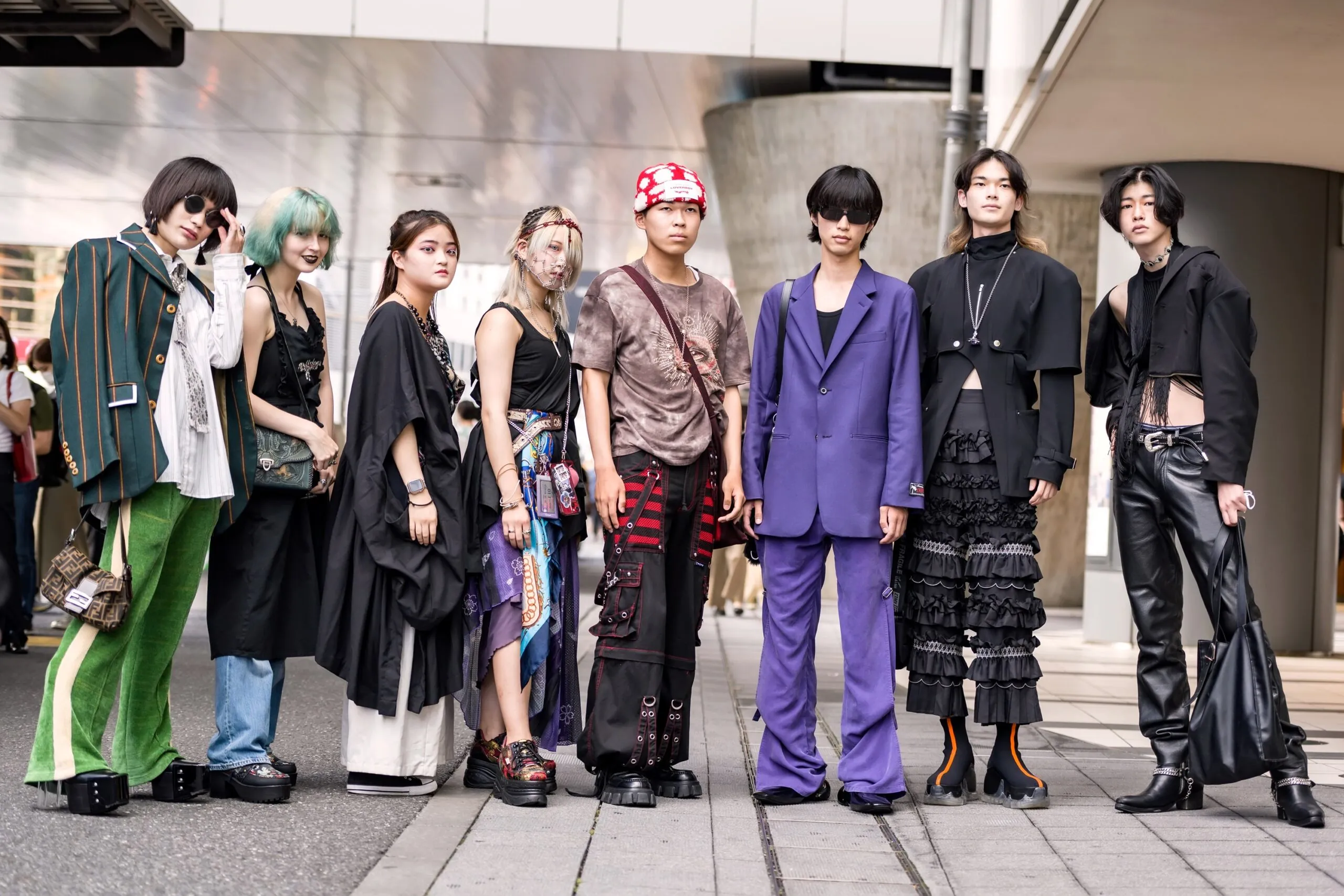Win a Free Trip to Japan!
Experience cherry blossoms and ancient temples
As we approach 2024, the world eagerly anticipates the exciting developments in Japanese fashion trends. Known for its unique blend of tradition and innovation, Japan continues to pave the way in sustainable practices, technology integration, and the revival of traditional textiles. Notably, the influence of streetwear on high fashion and the emergence of local designers showcase the vibrant creativity within the industry. With a focus on customization and vintage shopping, Japanese fashion trends promise to redefine style, reflecting modern values and cultural heritage. Prepare to be inspired as these trends unfold in the coming year.
Sustainable Fashion Practices in Japan
Sustainability is becoming a cornerstone of Japanese Fashion Trends as the industry focuses on eco-friendly practices. Japan’s fashion scene increasingly prioritizes sustainability through various innovative practices, appealing to both environmentally-conscious consumers and fashion enthusiasts. Here are some key elements of sustainable fashion emerging in Japan:
- Recycled Materials: Designers are increasingly utilizing recycled textiles, transforming waste into stylish apparel. This approach not only reduces waste but also minimizes the carbon footprint associated with production.
- Natural Dyes: Many Japanese brands adopt natural dyeing methods, using plant-based dyes to achieve vibrant colors without harmful chemicals. This practice connects consumers to the rich history of Japanese craftsmanship.
- Slow Fashion Movement: Emphasizing quality over quantity, the slow fashion movement encourages consumers to invest in durable pieces. Brands focus on timeless designs that transcend seasons, promoting a more sustainable mindset.
- Local Production: Supporting local artisans and manufacturers helps reduce transportation emissions and fosters community connections. Local production reflects the revival of traditional techniques, aligning with contemporary Japanese Fashion Trends.
- Repair and Upcycle: Instead of discarding old clothing, consumers are encouraged to repair and upcycle garments. This not only extends the lifecycle of fashion products but also inspires creativity in personal styling.
In summary, sustainable fashion practices are reshaping Japanese Fashion Trends, blending innovation with traditional artistry to create a stylish yet eco-conscious future.

Integration of Technology in Clothing
As we head into 2024, Japanese fashion trends increasingly embrace cutting-edge technology, transforming how we view and wear clothing. Designers innovate by integrating smart textiles and wearable technology, providing functional benefits that enhance everyday life.
Key Aspects of Technology in Clothing:
- Smart Fabrics: These textiles can adapt to various stimuli, such as temperature, moisture, and UV exposure. They offer benefits like temperature regulation, making clothing more comfortable.
- Wearable Devices: From fitness trackers to augmented reality glasses, the fusion of fashion and tech creates multifunctional pieces that align with modern lifestyles. Designers use these devices in unique ways, integrating them seamlessly into stylish garments.
- 3D Printing: This pioneering technique allows for bespoke clothing production. Designers can create customized pieces in hours, reducing waste and offering personalized styles that perfectly fit each individual.
Comparison: Traditional vs. Tech-Integrated Fashion
| Feature | Traditional Fashion | Tech-Integrated Fashion |
|---|---|---|
| Customization | Limited options | Highly customizable |
| Comfort | Varies by material | Adaptive designs available |
| Sustainability | Often less sustainable | Potential for eco-friendly materials |
| Functionality | Primarily aesthetic | Offers additional features |
In summary, the integration of technology into clothing exemplifies an exciting aspect of Japanese fashion trends as designers push boundaries, creating garments that blend aesthetics with functionality and sustainability.
Revival of Traditional Japanese Textiles
As we look ahead to 2024, one notable aspect of Japanese Fashion Trends is the revival of traditional textiles. This resurgence reflects a deep appreciation for craftsmanship and cultural heritage. Here’s what you can expect:
- Artisanal Techniques: Many designers prioritize methods such as kimono weaving, indigo dyeing, and katazome (stencil dyeing). These techniques not only preserve history but also create unique, high-quality fabrics.
- Sustainable Practices: The use of traditional textiles often aligns with sustainable practices. By reviving old methods, designers reduce reliance on synthetic materials, thereby minimizing environmental impact.
- Modern Interpretations: Contemporary designers blend these textiles with modern designs, creating a fusion that appeals to younger generations. The contrast of traditional fabrics with sleek silhouettes helps rejuvenate the aesthetic.
Comparison of Traditional Textiles and Modern Fabrics
| Traditional Textiles | Modern Fabrics |
|---|---|
| Handcrafted | Mass-produced |
| Sustainable | Often synthetic |
| Timeless patterns | Trend-driven patterns |
| Cultural significance | Commercial focus |
In conclusion, the Japanese Fashion Trends of 2024 will prominently feature traditional textiles, promoting sustainability while celebrating Japan’s rich heritage. This revival signifies a collective shift towards valuing craftsmanship in an era increasingly dominated by fast fashion. Expect an elegant blend of the past and future as designers embrace these timeless fabrics.
Gender Fluidity in Fashion Choices
As we move into 2024, gender fluidity in fashion choices continues to reshape the landscape of Japanese fashion trends. This shift towards inclusivity emphasizes a blend of styles that defy traditional gender norms. Here are some notable aspects to consider:
- Unisex Collections: Many brands are releasing unisex lines that cater to diverse gender identities, allowing everyone to express themselves freely.
- Layering Techniques: Japanese fashion encourages creative layering, enabling individuals to mix and match pieces regardless of their intended gender. Styles such as oversized shirts, cropped jackets, and baggy trousers are becoming staples.
- Feminine Touches on Masculine Cuts: Designers blur the lines by incorporating feminine elements into traditionally masculine silhouettes. Consider tailored trousers paired with frilly shirts or skirts.
- Street Style Influence: The vibrant streetwear scene in Japan also champions gender fluidity, with many influencers showcasing outfits that mix bold prints, fabrics, and accessories from various gender perspectives.
- Cultural Acceptance: Society’s growing acceptance of fluid gender identities paves the way for innovative fashion choices that prioritize personal expression.
In summary, the evolution of Japanese fashion trends toward gender fluidity reflects broader cultural shifts. As we anticipate the future, expect this inclusive movement to continue influencing designs, encouraging individuality and creativity in the process.

Influence of Streetwear on High Fashion
Japanese fashion trends continue to evolve, particularly with the significant impact of streetwear on high fashion. This unique blend showcases how casual styles influence luxury brands, creating a dynamic shift in the fashion landscape. Here are some key aspects of this trend:
- Cross-Pollination of Styles: Streetwear incorporates bold graphics, oversized silhouettes, and casual aesthetics, which high fashion designers are now emulating. This fusion results in innovative collections that resonate with a broader audience.
- Celebrity Endorsement: Influential figures in the entertainment industry have adopted streetwear, driving its popularity. When high-fashion houses collaborate with streetwear brands, they attract a diverse clientele eager for exclusivity and comfort.
- Comfort Meets Luxury: The rise of remote work and casual environments has caused a shift towards comfort. High fashion now often includes streetwear elements such as hoodies, sneakers, and joggers.
Comparison Table: Streetwear vs. High Fashion
| Aspect | Streetwear | High Fashion |
|---|---|---|
| Price Point | Generally affordable | Often luxury-priced |
| Aesthetic | Casual, urban, laid-back | Sophisticated, tailored |
| Target Audience | Youth and trendy culture | Affluent, fashion-forward adults |
| Fabric Utilization | Practical, varied materials | Exquisite fabrics and finishes |
In conclusion, the interplay between streetwear and high fashion signifies a transformative period in Japanese fashion trends, emphasizing comfort, accessibility, and individuality. As we approach 2024, expect to see this influence flourish, breaking down traditional barriers and inviting a wider audience into the world of high fashion.
Emergence of Local Designers
The landscape of Japanese fashion is undergoing a significant transformation, highlighted by the emergence of local designers. These talented individuals are not only redefining Japanese Fashion Trends but also fostering a sense of cultural identity and sustainability. Here’s a closer look at the key factors driving this movement:
- Cultural Heritage: Local designers often draw inspiration from Japan’s rich history and contemporary culture, blending traditional elements with modern aesthetics. This results in unique creations that honor the past while appealing to today’s consumers.
-
Sustainability: Many emerging designers emphasize eco-friendly practices. They focus on:
- Sustainable materials: Using organic fabrics and recycled materials to create environmentally conscious collections.
- Ethical production: Prioritizing fair labor practices and local manufacturing to reduce carbon footprints.
- Customization: Local designers often offer personalized pieces that cater to individual preferences. This trend aligns with the growing demand for unique, bespoke fashion items.
- Collaboration: Partnerships between local designers and artisans further enhance the authenticity of their work. Collaborations often result in innovative pieces that highlight traditional crafts, thus merging art with fashion.
With these advancements, Japanese Fashion Trends are becoming more inclusive and diverse, allowing local designers to carve their niche in the global fashion scene. Collectively, these creators contribute to a vibrant, sustainable fashion ecosystem poised to thrive in 2024 and beyond.
Customization and Personalization Trends
As we move into 2024, customization and personalization will play a vital role in shaping Japanese fashion trends. Consumers are increasingly seeking unique pieces that reflect their individuality. This desire is driving brands to innovate and adapt. Here are some key aspects to consider:
- Bespoke Tailoring: More brands offer personalized tailoring services, allowing customers to choose fabrics, cuts, and styles that suit their preferences.
- Modular Fashion: Designers are creating garments that can be modified. For instance, the addition or removal of sleeves or altering silhouette can transform an outfit entirely.
- Print and Pattern Customization: Consumers can design their own prints. Brands often use digital printing technology, enabling customers to create one-of-a-kind pieces.
- Personalized Accessories: Jewelry, bags, and shoes that reflect personal style through engraving, color choices, or unique designs gain traction in the market.
Comparison of Customization Trends
| Customization Aspect | Description | Popularity Level |
|---|---|---|
| Bespoke Tailoring | Tailoring garments to individual specs | High |
| Modular Fashion | Mix-and-match styles for versatility | Medium |
| Print and Pattern Customization | User-designed prints on apparel | High |
| Personalized Accessories | Customized jewelry and bags | High |
These trends reflect a broader Japanese fashion trends movement where individuality meets creativity, leading to a more expressive and personal fashion landscape. Expect to see a significant rise in the demand for these tailored experiences as consumers seek to stand out in 2024.

Focus on Vintage and Thrift Shopping
As 2024 approaches, Japanese fashion trends are witnessing a significant embrace of vintage and thrift shopping. This shift reflects a broader global movement toward sustainable consumerism and unique style expression.
Why Vintage and Thrift Shopping?
- Sustainability: Reducing waste is a priority. By opting for pre-loved items, fashion enthusiasts contribute to a more sustainable future.
- Unique Style: Thrift shops offer one-of-a-kind pieces that help individuals stand out in a sea of fast fashion.
- Affordability: Shopping second-hand can be budget-friendly, allowing fashion lovers to access quality brands without breaking the bank.
Key Features of This Trend
- Diverse Selection: From retro Japanese streetwear to high-end vintage brands, the offerings are abundant.
- Cultural Significance: Vintage pieces can represent different eras of Japanese fashion, allowing wearers to connect with history.
- Mix and Match: Modern fashionistas embrace mixing vintage with contemporary styles to create unique outfits that highlight personal flair.
Conclusion
The focus on vintage and thrift shopping within Japanese fashion trends will likely continue to grow, encouraging both sustainability and self-expression. As awareness increases, expect to see more thrift markets and vintage pop-up shops shaping the fashion landscape in 2024.
Impact of Global Events on Fashion Trends
Global events significantly influence Japanese Fashion Trends, reshaping styles and consumer preferences. As the world evolves, Japan adapts its fashion scene to reflect these changes.
Key global events affecting fashion include:
- Economic Recession: Economic downturns tighten budgets, prompting consumers to seek affordable options. This shift often encourages a rise in thrift shopping and vintage fashion, making sustainability a priority in Japan.
- Pandemic Effects: The COVID-19 pandemic altered lifestyles and behaviors, increasing demand for comfortable and functional clothing. Leisurewear has become a staple, reflecting the need for versatility in daily apparel.
- Cultural Movements: Social and political movements worldwide spur discussions about inclusivity and representation. Consequently, Japanese designers have started embracing gender fluidity, creating collections that break traditional norms.
- Sustainability Push: As environmental awareness grows globally, Japanese brands are leveraging sustainable materials, aligning with a larger movement towards eco-friendly practices.
Comparison Table of Global Influences on Japanese Fashion:
| Global Event | Impact on Fashion Trends | Japanese Response |
|---|---|---|
| Economic Recession | Switch to thrift and vintage styles | Rise in sustainable practices |
| Pandemic | Demand for comfortable clothing | Focus on leisurewear |
| Cultural Movements | Increasing gender fluidity | Adoption of inclusive designs |
| Sustainability Focus | Shift to eco-friendly materials | Incorporation of traditional fabrics |
In summary, Japanese Fashion Trends continue to evolve, shaped by the dynamic interplay between global events and domestic responses, creating a vibrant and responsive industry.
Forecast of Color Palettes and Styles for 2024
As we look ahead to 2024, Japanese fashion trends are expected to embrace a captivating blend of vibrant colors and innovative styles. Designers are increasingly focusing on both bold and soothing color palettes that reflect a balance of tradition and modernity. Here’s what we anticipate:
Key Color Trends
- Bold Neons: Expect to see vivid neons, reminiscent of the street style from the 1990s, making a significant comeback.
- Earthy Tones: Shades like terracotta, olive green, and muted browns will dominate, reflecting a sustainable ethos.
- Pastel Hues: Soft pastels, such as lavender and baby blue, will continue to be popular, appealing to a sense of calm and comfort.
Style Trends
The Japanese fashion trends of 2024 will also see a convergence of various styles:
- Layering: Layered outfits will remain prevalent, allowing individuals to mix textures and colors seamlessly.
- Oversized Silhouettes: Comfortable, oversized clothing will reflect the ongoing influence of streetwear while encouraging personal expression.
- Statement Accessories: Unique accessories will gain significance, with bold colors and eclectic designs enhancing outfits.
Comparison Table: Color Trend Vs. Style Trend
| Color Trend | Style Trend |
|---|---|
| Bold Neons | Oversized Silhouettes |
| Earthy Tones | Layering |
| Pastel Hues | Statement Accessories |
In summary, 2024 promises a vibrant tapestry of color and style in Japanese fashion trends, blending comfort and expression, showcasing a unique cultural narrative. Prepare to see these exciting elements influence wardrobes worldwide!
Frequently Asked Questions
What are the key trends expected to emerge in Japanese fashion for 2024?
In 2024, Japanese fashion is anticipated to embrace bold colors, oversized silhouettes, and a blend of traditional and contemporary styles. Expect to see a resurgence of vintage aesthetics, with modern twists such as layering techniques and innovative use of fabrics. Streetwear is likely to take center stage, featuring unique graphic designs and an emphasis on comfort, while sustainable practices will continue to shape the industry as designers focus on eco-friendly materials.
How are traditional Japanese elements influencing modern fashion trends?
Traditional Japanese elements, such as kimono fabrics and patterns, are increasingly being adapted into modern fashion trends. Designers are incorporating these elements into contemporary styles, creating fusion garments that honor cultural heritage while appealing to younger generations. This can include the use of obi sashes, intricate embroidery, and hakama-inspired shapes, allowing traditional craftsmanship to coexist with the fast-paced modern fashion world. This trend not only highlights the beauty of traditional attire but also serves as a way to keep these cultural elements alive.
What role does streetwear play in the evolution of Japanese fashion in 2024?
Streetwear is expected to play a pivotal role in the evolution of Japanese fashion in 2024, reflecting the city’s vibrant urban culture. With its roots in youth subcultures, streetwear combines comfort with high fashion, making it accessible for a broad audience. Designers will likely focus on cutting-edge designs, unique graphics, and collaborations with artists to create sought-after limited editions. As a result, streetwear will continue to challenge conventional fashion norms and demonstrate the influence of societal trends on individual expression.
Are there specific colors or patterns that will dominate Japanese fashion in 2024?
Colors and patterns in Japanese fashion for 2024 are predicted to include vibrant hues such as electric blue, rich red, and pastel tones. Geometric patterns, floral motifs, and abstract designs are also set to make waves, often inspired by traditional art and nature. Additionally, brands may explore bolder color-blocking techniques and experimental prints that encourage self-expression. The integration of these lively colors and patterns will serve to energize collections and captivate the audience’s attention.
How is sustainability being integrated into Japanese fashion trends for 2024?
Sustainability is becoming increasingly integral to Japanese fashion trends for 2024, with designers prioritizing eco-friendly practices throughout their production processes. We expect to see the rise of upcycled materials, ethically sourced textiles, and transparent supply chains. Brands are also focusing on creating versatile, timeless pieces that promote a slower fashion cycle, encouraging consumers to buy less but invest more in quality products. This shift not only appeals to eco-conscious consumers but also reflects a broader global trend towards sustainable practices in fashion.
